- Home
- Edgar Allan Poe
The Works of Edgar Allan Poe — Volume 3 Page 16
The Works of Edgar Allan Poe — Volume 3 Read online
Page 16
CHAPTER 15
ON the twelfth we made sail from Christmas Harbour retracing our way tothe westward, and leaving Marion’s Island, one of Crozet’s group, on thelarboard. We afterward passed Prince Edward’s Island, leaving it also onour left, then, steering more to the northward, made, in fifteen days,the islands of Tristan d’Acunha, in latitude 37 degrees 8’ S, longitude12 degrees 8’ W.
This group, now so well known, and which consists of three circularislands, was first discovered by the Portuguese, and was visitedafterward by the Dutch in 1643, and by the French in 1767. The threeislands together form a triangle, and are distant from each other aboutten miles, there being fine open passages between. The land in all ofthem is very high, especially in Tristan d’Acunha, properly so called.This is the largest of the group, being fifteen miles in circumference,and so elevated that it can be seen in clear weather at the distance ofeighty or ninety miles. A part of the land toward the north rises morethan a thousand feet perpendicularly from the sea. A tableland at thisheight extends back nearly to the centre of the island, and from thistableland arises a lofty cone like that of Teneriffe. The lower half ofthis cone is clothed with trees of good size, but the upper region isbarren rock, usually hidden among the clouds, and covered with snowduring the greater part of the year. There are no shoals or otherdangers about the island, the shores being remarkably bold and the waterdeep. On the northwestern coast is a bay, with a beach of black sandwhere a landing with boats can be easily effected, provided there be asoutherly wind. Plenty of excellent water may here be readily procured;also cod and other fish may be taken with hook and line.
The next island in point of size, and the most westwardly of the group,is that called the Inaccessible. Its precise situation is 37 degrees 17’S. latitude, longitude 12 degrees 24’ W. It is seven or eight miles incircumference, and on all sides presents a forbidding and precipitousaspect. Its top is perfectly flat, and the whole region is sterile,nothing growing upon it except a few stunted shrubs.
Nightingale Island, the smallest and most southerly, is in latitude 37degrees 26’ S., longitude 12 degrees 12’ W. Off its southern extremityis a high ledge of rocky islets; a few also of a similar appearance areseen to the northeast. The ground is irregular and sterile, and a deepvalley partially separates it.
The shores of these islands abound, in the proper season, with sealions, sea elephants, the hair and fur seal, together with a greatvariety of oceanic birds. Whales are also plenty in their vicinity.Owing to the ease with which these various animals were here formerlytaken, the group has been much visited since its discovery. The Dutchand French frequented it at a very early period. In 1790, CaptainPatten, of the ship Industry, of Philadelphia, made Tristan d’Acunha,where he remained seven months (from August, 1790, to April, 1791) forthe purpose of collecting sealskins. In this time he gathered no lessthan five thousand six hundred, and says that he would have had nodifficulty in loading a large ship with oil in three weeks. Upon hisarrival he found no quadrupeds, with the exception of a few wild goats;the island now abounds with all our most valuable domestic animals,which have been introduced by subsequent navigators.
I believe it was not long after Captain Patten’s visit that CaptainColquhoun, of the American brig Betsey, touched at the largest of theislands for the purpose of refreshment. He planted onions, potatoes,cabbages, and a great many other vegetables, an abundance of all whichis now to be met with.
In 1811, a Captain Haywood, in the Nereus, visited Tristan. He foundthere three Americans, who were residing upon the island to preparesealskins and oil. One of these men was named Jonathan Lambert, andhe called himself the sovereign of the country. He had cleared andcultivated about sixty acres of land, and turned his attention toraising the coffee-plant and sugar-cane, with which he had beenfurnished by the American Minister at Rio Janeiro. This settlement,however, was finally abandoned, and in 1817 the islands were takenpossession of by the British Government, who sent a detachment for thatpurpose from the Cape of Good Hope. They did not, however, retain themlong; but, upon the evacuation of the country as a British possession,two or three English families took up their residence thereindependently of the Government. On the twenty-fifth of March, 1824, theBerwick, Captain Jeffrey, from London to Van Diemen’s Land, arrived atthe place, where they found an Englishman of the name of Glass, formerlya corporal in the British artillery. He claimed to be supreme governorof the islands, and had under his control twenty-one men and threewomen. He gave a very favourable account of the salubrity of theclimate and of the productiveness of the soil. The population occupiedthemselves chiefly in collecting sealskins and sea elephant oil,with which they traded to the Cape of Good Hope, Glass owning asmall schooner. At the period of our arrival the governor was still aresident, but his little community had multiplied, there beingfifty-six persons upon Tristan, besides a smaller settlement of seven onNightingale Island. We had no difficulty in procuring almost everykind of refreshment which we required--sheep, hogs, bullocks, rabbits,poultry, goats, fish in great variety, and vegetables were abundant.Having come to anchor close in with the large island, in eighteenfathoms, we took all we wanted on board very conveniently. CaptainGuy also purchased of Glass five hundred sealskins and some ivory. Weremained here a week, during which the prevailing winds were from thenorthward and westward, and the weather somewhat hazy. On the fifth ofNovember we made sail to the southward and westward, with the intentionof having a thorough search for a group of islands called the Auroras,respecting whose existence a great diversity of opinion has existed.
These islands are said to have been discovered as early as 1762, by thecommander of the ship Aurora. In 1790, Captain Manuel de Oyarvido, inthe ship Princess, belonging to the Royal Philippine Company, sailed, ashe asserts, directly among them. In 1794, the Spanish corvette Atrevidawent with the determination of ascertaining their precise situation,and, in a paper published by the Royal Hydrographical Society ofMadrid in the year 1809, the following language is used respectingthis expedition: “The corvette Atrevida practised, in their immediatevicinity, from the twenty-first to the twenty-seventh of January, allthe necessary observations, and measured by chronometers the differenceof longitude between these islands and the port of Soledad in theManillas. The islands are three, they are very nearly in the samemeridian; the centre one is rather low, and the other two may be seenat nine leagues’ distance.” The observations made on board the Atrevidagive the following results as the precise situation of each island.The most northern is in latitude 52 degrees 37’ 24” S., longitude 47degrees, 43’ 15” W.; the middle one in latitude 53 degrees 2’ 40” S.,longitude 47 degrees 55’ 15” W.; and the most southern in latitude 53degrees 15’ 22” S., longitude 47 degrees 57’ 15” W.
On the twenty-seventh of January, 1820, Captain James Weddel, of theBritish navy, sailed from Staten Land also in search of the Auroras. Hereports that, having made the most diligent search and passed not onlyimmediately over the spots indicated by the commander of the Atrevida,but in every direction throughout the vicinity of these spots, hecould discover no indication of land. These conflicting statements haveinduced other navigators to look out for the islands; and, strange tosay, while some have sailed through every inch of sea where they aresupposed to lie without finding them, there have been not a few whodeclare positively that they have seen them; and even been close inwith their shores. It was Captain Guy’s intention to make every exertionwithin his power to settle the question so oddly in dispute. {*3}
We kept on our course, between the south and west, with variableweather, until the twentieth of the month, when we found ourselves onthe debated ground, being in latitude 53 degrees 15’ S., longitude 47degrees 58’ W.--that is to say, very nearly upon the spot indicated asthe situation of the most southern of the group. Not perceiving any signof land, we continued to the westward of the parallel of fifty-threedegrees south, as far as the meridian of fifty degrees west. We thenstood to the north as far as the parallel of fifty-two degrees south,wh
en we turned to the eastward, and kept our parallel by doublealtitudes, morning and evening, and meridian altitudes of the planetsand moon. Having thus gone eastwardly to the meridian of the westerncoast of Georgia, we kept that meridian until we were in the latitudefrom which we set out. We then took diagonal courses throughout theentire extent of sea circumscribed, keeping a lookout constantly at themasthead, and repeating our examination with the greatest care for aperiod of three weeks, during which the weather was remarkably pleasantand fair, with no haze whatsoever. Of course we were thoroughlysatisfied that, whatever islands might have existed in this vicinity atany former period, no vestige of them remained at the present day. Sincemy return home I find that the same ground was traced over, with equalcare, in 1822, by Captain Johnson, of the American schooner Henry, andby Captain Morrell in the American schooner Wasp--in both cases with thesame result as in our own.

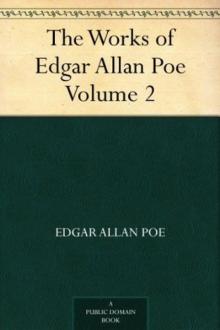 The Works of Edgar Allan Poe — Volume 2
The Works of Edgar Allan Poe — Volume 2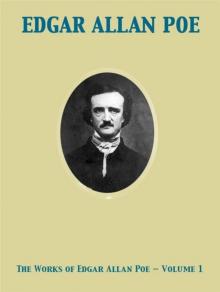 The Works of Edgar Allan Poe — Volume 1
The Works of Edgar Allan Poe — Volume 1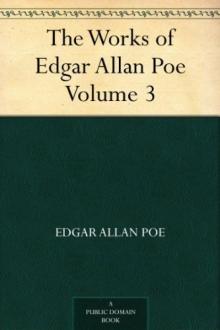 The Works of Edgar Allan Poe — Volume 3
The Works of Edgar Allan Poe — Volume 3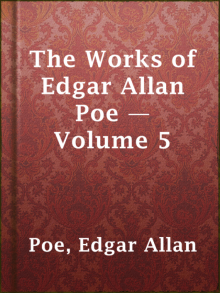 The Works of Edgar Allan Poe — Volume 5
The Works of Edgar Allan Poe — Volume 5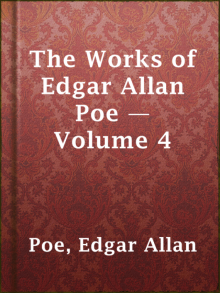 The Works of Edgar Allan Poe — Volume 4
The Works of Edgar Allan Poe — Volume 4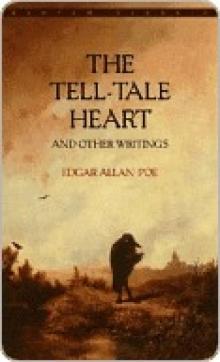 The Tell-Tale Heart
The Tell-Tale Heart The Raven (Penguin)
The Raven (Penguin)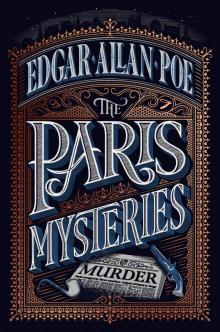 The Paris Mysteries
The Paris Mysteries Tales of Terror from Edgar Allan Poe
Tales of Terror from Edgar Allan Poe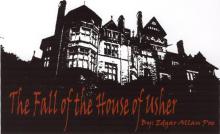 The Fall of the House of Usher
The Fall of the House of Usher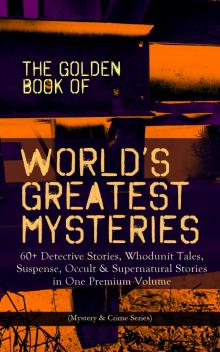 The Golden Book of World's Greatest Mysteries
The Golden Book of World's Greatest Mysteries The Narrative of Arthur Gordon Pym of Nantucket
The Narrative of Arthur Gordon Pym of Nantucket Ligeia
Ligeia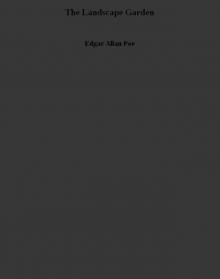 The Landscape Garden
The Landscape Garden Complete Tales & Poems
Complete Tales & Poems Great Tales and Poems of Edgar Allan Poe
Great Tales and Poems of Edgar Allan Poe The Colloquy of Monos and Una
The Colloquy of Monos and Una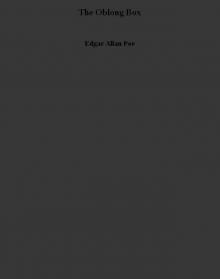 The Oblong Box
The Oblong Box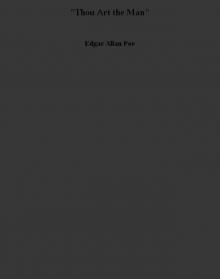 Thou Art the Man
Thou Art the Man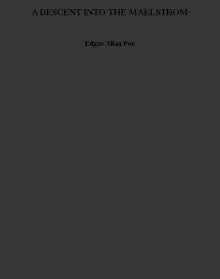 A DESCENT INTO THE MAELSTROM
A DESCENT INTO THE MAELSTROM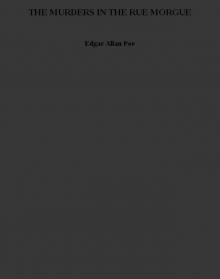 THE MURDERS IN THE RUE MORGUE
THE MURDERS IN THE RUE MORGUE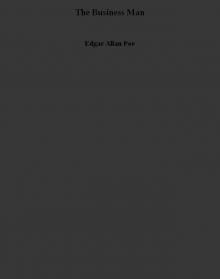 The Business Man
The Business Man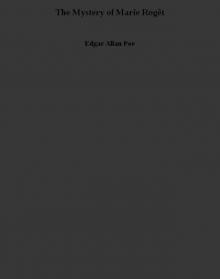 The Mystery of Marie Rogêt
The Mystery of Marie Rogêt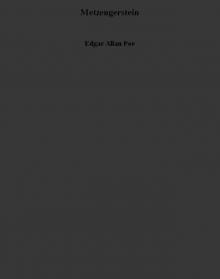 Metzengerstein
Metzengerstein The Man That Was Used Up
The Man That Was Used Up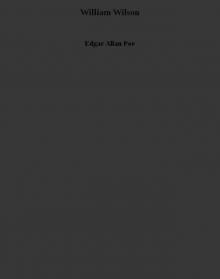 William Wilson
William Wilson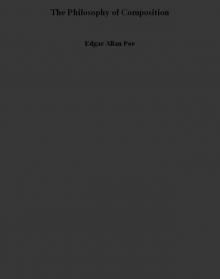 The Philosophy of Composition
The Philosophy of Composition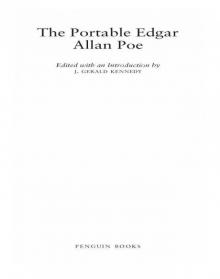 The Portable Edgar Allan Poe
The Portable Edgar Allan Poe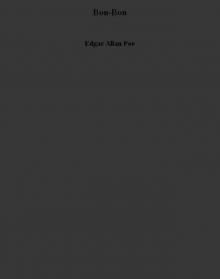 Bon-Bon
Bon-Bon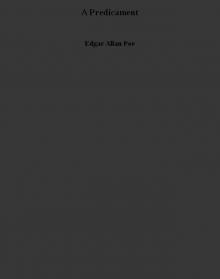 A Predicament
A Predicament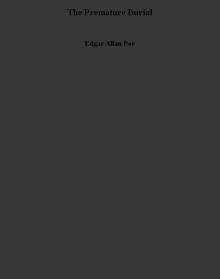 The Premature Burial
The Premature Burial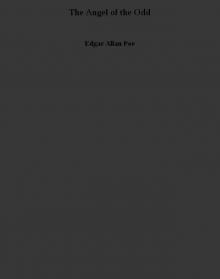 The Angel of the Odd
The Angel of the Odd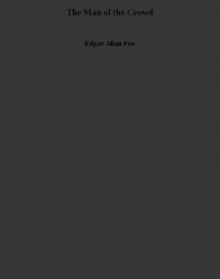 The Man of the Crowd
The Man of the Crowd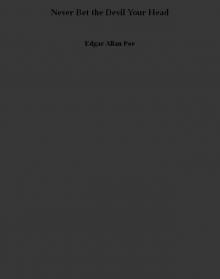 Never Bet the Devil Your Head
Never Bet the Devil Your Head The Tell-Tale Heart and Other Writings
The Tell-Tale Heart and Other Writings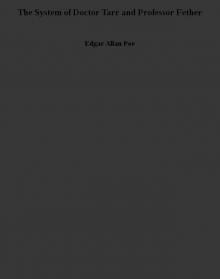 The System of Doctor Tarr and Professor Fether
The System of Doctor Tarr and Professor Fether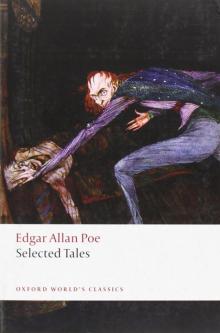 Selected Tales (Oxford World's Classics)
Selected Tales (Oxford World's Classics)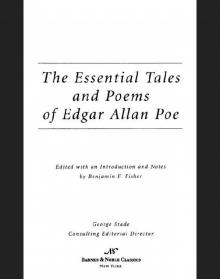 Essential Tales and Poems of Edgar Allan Poe (Barnes & Noble Classics Series)
Essential Tales and Poems of Edgar Allan Poe (Barnes & Noble Classics Series) MS. Found in a Bottle
MS. Found in a Bottle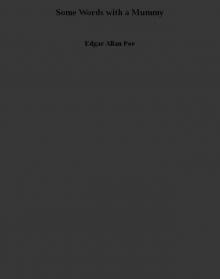 Some Words with a Mummy
Some Words with a Mummy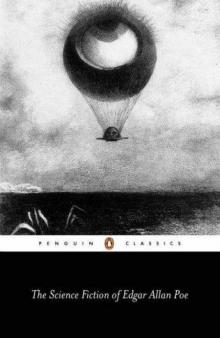 The Science Fiction of Edgar Allan Poe (Penguin Classics)
The Science Fiction of Edgar Allan Poe (Penguin Classics)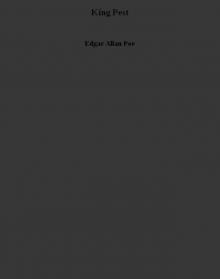 King Pest
King Pest CRITICISM
CRITICISM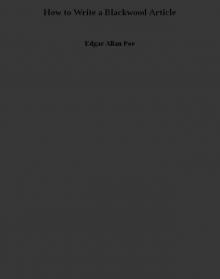 How to Write a Blackwood Article
How to Write a Blackwood Article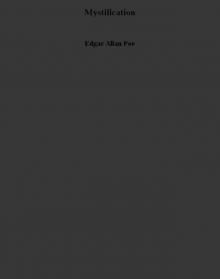 Mystification
Mystification Diddling Considered as One of the Exact Sciences
Diddling Considered as One of the Exact Sciences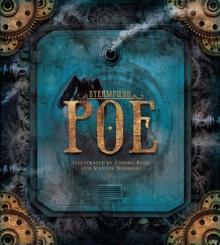 Steampunk Poe
Steampunk Poe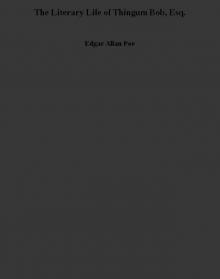 The Literary Life of Thingum Bob, Esq.
The Literary Life of Thingum Bob, Esq.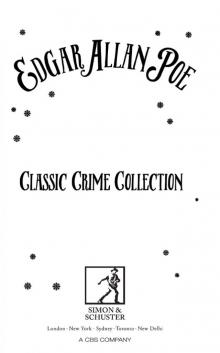 Classic Crime Collection
Classic Crime Collection Complete Stories and Poems of Edgar Allen Poe
Complete Stories and Poems of Edgar Allen Poe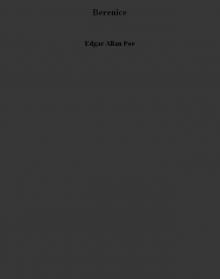 Berenice
Berenice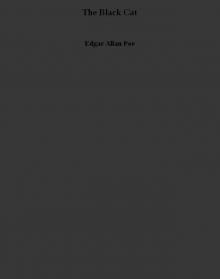 The Black Cat
The Black Cat The Slender Poe Anthology
The Slender Poe Anthology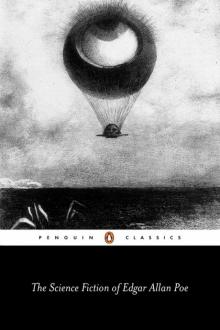 The Science Fiction of Edgar Allan Poe
The Science Fiction of Edgar Allan Poe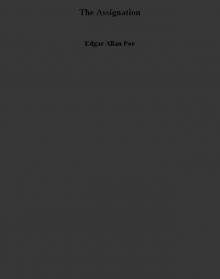 The Assignation
The Assignation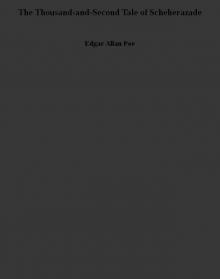 The Thousand-and-Second Tale of Scheherazade
The Thousand-and-Second Tale of Scheherazade The Raven and Other Short Stories
The Raven and Other Short Stories The Spectacles
The Spectacles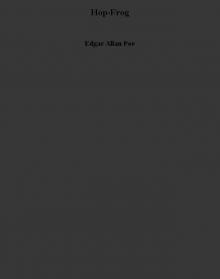 Hop-Frog
Hop-Frog The Purloined Letter
The Purloined Letter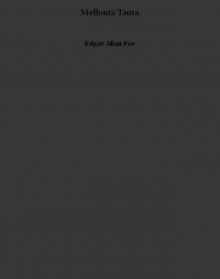 Mellonta Tauta
Mellonta Tauta The Balloon-Hoax
The Balloon-Hoax Landor's Cottage
Landor's Cottage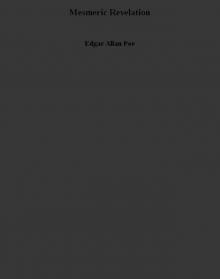 Mesmeric Revelation
Mesmeric Revelation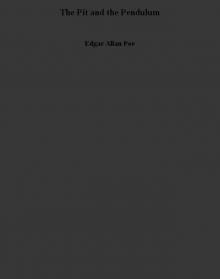 The Pit and the Pendulum
The Pit and the Pendulum